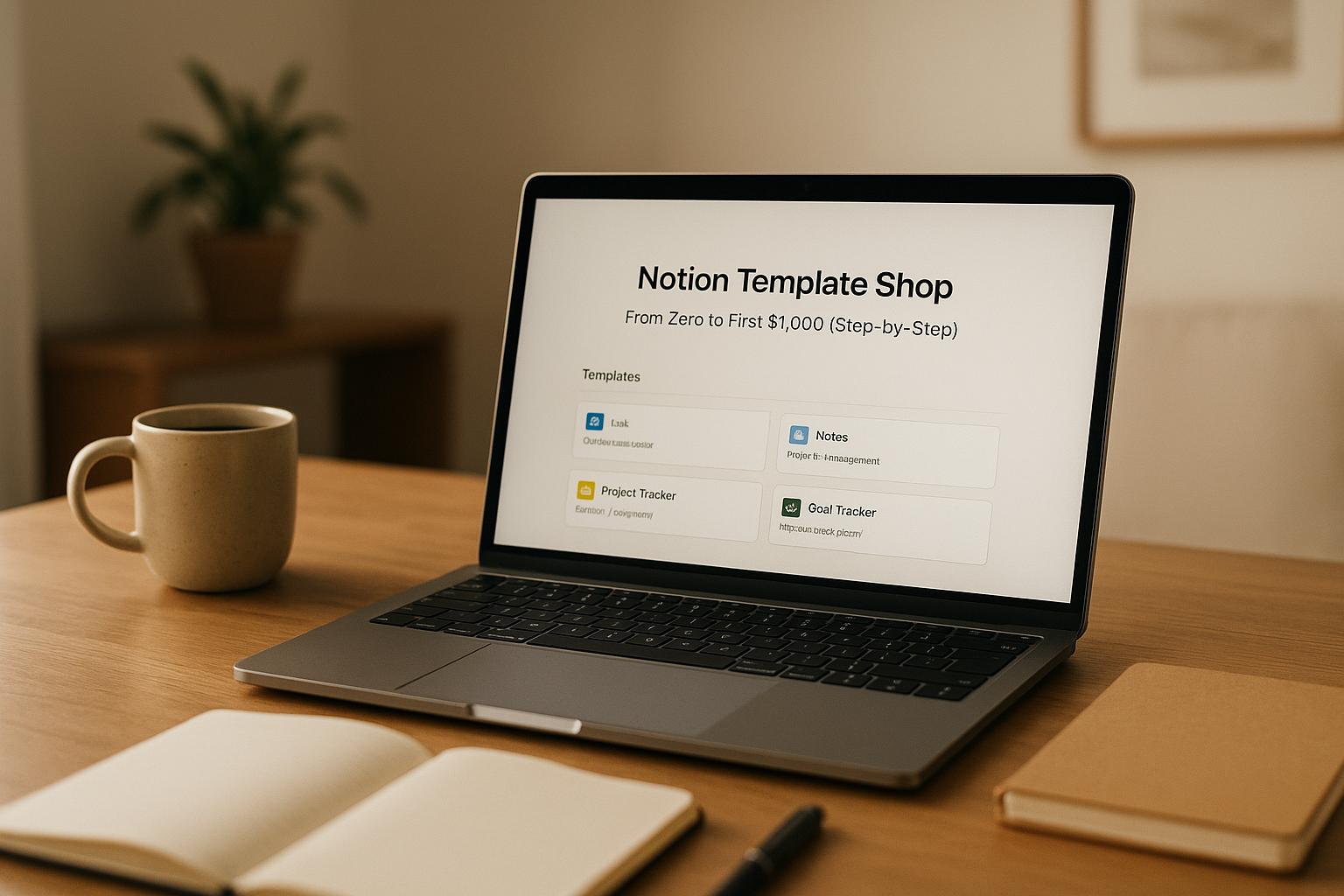
AI is reshaping customer acquisition in 2025. Businesses that use AI for personalized marketing, data analysis, and multi-channel strategies are seeing better results, like a 760% boost in email revenue and 20% higher sales productivity.
Here’s the formula in simple steps:
- Analyze Customer Data with AI: Use real-time insights and pattern detection to target the right customers.
- Personalize Outreach: AI scales personalization, creating tailored messages across channels.
- Leverage Multi-Channel Marketing: AI ensures consistent branding, 24/7 chatbot support, and seamless customer transitions.
Why this matters: With 91% of customers preferring personalized experiences, AI-driven strategies are critical to improving ROI and reducing costs.
| Key Metrics | AI Impact |
|---|---|
| Email Open Rates | +26% |
| Marketing ROI | +20% |
| Customer Interactions | +70% with AI chatbots |
| Sales Productivity | +20% through AI lead scoring |
Next Steps: Review your current methods, pick the right AI tools, and create an action plan to optimize your customer acquisition strategy.
AI Driven Customer Acquisition: AI As A Tool For Growth
3 Key Parts of the 2025 Customer Formula
Customer Data Analysis with AI
AI is transforming how companies analyze customer data. By using advanced algorithms, businesses can uncover patterns and trends that would otherwise go unnoticed. This gives companies a sharper edge in targeting the right customers.
| Feature | Impact | Outcome |
|---|---|---|
| Real-Time Insights | Instant analysis of customer behavior | Faster, smarter decisions |
| Pattern Detection | Finds hidden customer preferences | More precise targeting |
| Adaptive Learning | Updates profiles automatically | Constantly optimized strategies |
Next, let’s explore how AI is reshaping customer outreach through tailored interactions.
Personalized Customer Outreach
AI makes personalization scalable, allowing businesses to connect with customers in a way that feels genuine.
For example, Coca-Cola uses AI to create dynamic marketing content that adapts visuals and messages based on consumer preferences and regional trends. Similarly, The New York Times leverages AI to schedule and distribute articles tailored to reader behavior, boosting engagement and retention.
These tailored approaches are setting the foundation for impactful marketing across multiple channels.
Multi-Channel Marketing
In 2025, being present across multiple platforms isn’t optional - it’s essential. The data backs this up: 74% of internet users now prefer chatbots for handling basic questions, and social commerce continues to thrive.
Key components of effective multi-channel strategies include:
- Consistent Messaging: AI ensures your brand voice stays uniform across platforms.
- 24/7 Availability: AI-powered chatbots provide round-the-clock support.
- Seamless Transitions: AI integrates platforms, making it easy for customers to switch between channels.
The payoff? Businesses using AI-driven multi-channel strategies report 70% more customer interactions. This increased engagement directly boosts acquisition rates and customer loyalty.
sbb-itb-08dd11e
How to Use This Formula: 3 Steps
Step 1: Review Your Current Methods
Start by evaluating how you're currently acquiring customers. Look for any gaps or missed opportunities. For example, companies that use advanced analytics for segmentation can see up to a 20% boost in marketing ROI. This review helps you figure out which AI tools will work best for your needs.
| Aspect to Review | Key Questions | Metrics to Track |
|---|---|---|
| Channel Performance | Which channels bring in quality leads? | Cost per acquisition, conversion rates |
| Customer Journey | Where are prospects dropping off? | Funnel completion rates |
| Budget Allocation | Which investments deliver the best returns? | Return on ad spend (ROAS) |
Step 2: Pick Your AI Tools
Once you’ve identified the gaps in your current approach, it’s time to choose AI tools that can address those challenges. Research shows that 68% of marketers report positive ROI from their AI investments.
"Adam Bloom notes that automating routine tasks with AI frees sales teams to focus on relationship building, boosting revenue per rep".
Here are some tools you might want to explore:
- Tools for assessing data quality
- Systems that integrate seamlessly with what you already use
- Options that can scale as your needs grow
Step 3: Create Your Action Plan
Now, map out a clear plan with defined goals and timelines. For example, Spotify revamped its email campaigns in March 2023, cutting bounce rates from 12.3% to 2.1% in just 60 days, while improving deliverability by 34%.
Here’s how to structure your plan:
- Set Clear Objectives
Outline measurable goals, such as reducing Customer Acquisition Cost (CAC), increasing Lifetime Value (LTV), or improving conversion rates. - Create a Testing Schedule
Use A/B testing to experiment with campaign elements on a smaller scale before rolling them out widely. - Monitor Performance
Regularly track your key metrics and tweak your strategy based on real-time data.
"By understanding which customers are likely to make a purchase in the near future, and which are likely to churn, marketing pushes can be perfectly timed to improve retention", explains Cary Lawrence, CEO of ecommerce analytics firm Decile.
Track and Improve Your Results
Key Metrics to Watch in 2025
Keep an eye on these important metrics:
| Metric | Target Benchmark | Why It Matters |
|---|---|---|
| Customer Acquisition Cost (CAC) | LTV:CAC ratio ≥ 3:1 | Ensures growth is profitable |
| Conversion Rate | 3% (industry benchmark) | Tracks campaign success |
| Customer Lifetime Value (CLV) | Varies by industry | Highlights long-term customer potential |
| Churn Rate | Keep below 18% | Reflects industry average |
These figures provide a foundation for using AI tools to refine your customer acquisition strategies.
"One common mistake I've seen businesses make when analyzing customer acquisition data is focusing solely on the number of acquired customers without scrutinizing the quality or potential LTV of these customers. Consequently, they might attract one-time customers, leading to high churn rates. We combat this by using analytics to forecast the LTV of each user segment, and then, we prioritize the ones with the highest long-term profitability." – Riccardo Ocleppo, Founder of Docsity & OPIT
Use AI to Monitor Results
AI tools can take your metric tracking to the next level by providing actionable insights. For example, Walmart leveraged big data to create personalized shopping experiences, which led to a 30% boost in new sign-ups and a 20% increase in conversion rates.
Here’s how AI can help:
- Predictive Analysis
Amazon uses AI to analyze cart abandonment and user behavior, sending personalized emails to maintain high conversion rates. - Real-Time Campaign Optimization
A California bank teamed up with Quantzig for customer segmentation, achieving a 17% rise in customer acquisition and a 54% retention rate.
Adjust Your Strategy with Data
AI insights can guide you in fine-tuning your strategies. Brooke Webber, Head of Marketing at Ninja Patches, explains, "Brands often focus on quantitative data. Without qualitative insights, they miss critical strengths and weaknesses".
To improve your approach:
- Use HubSpot's Advanced Marketing Reporting to link customer interactions directly to revenue.
- Apply AI insights to identify and focus on the most effective channels.
- Collaborate with identity graph companies to maximize the value of first-party data.
"Data is the fuel that drives AI decisioning engines. The performance of the AI tool will be commensurate with the quality of data that is fueling it", says Matt Hasan, Founder and CEO of aiRESULTS, Inc.
To stay ahead, focus on boosting customer lifetime value through better content marketing, building engaged communities, and loyalty programs.
Conclusion: Next Steps for AI-Driven Growth
Results of the 2025 Formula
AI-powered strategies are delivering measurable results for forward-thinking businesses. Here’s what companies are achieving with these tools:
| Result | Impact | Source |
|---|---|---|
| Email Marketing | 26% higher open rates, 760% revenue boost | |
| Marketing ROI | Up to 20% improvement via advanced analytics | |
| Sales Productivity | 20% increase using AI-driven lead scoring | |
| Customer Engagement | 70% more interactions thanks to AI chatbots |
These numbers highlight the potential for AI to transform business outcomes. But what’s next for customer acquisition?
Emerging Trends in Customer Acquisition
Looking ahead, several developments are set to reshape how businesses attract and keep customers:
More Personalization
Consumers increasingly expect tailored experiences, with 91% favoring brands that provide relevant recommendations. For example, Target uses AI to offer personalized discounts based on shopping habits.
Voice Search Optimization
Voice search is changing how businesses approach SEO. To keep up, companies are focusing on:
- Writing content in a conversational tone
- Prioritizing mobile-friendly designs
- Structuring content around common questions
"Gen AI will drive conversion rates up. Resource costs will go down. Offers, value, and margin should improve considerably from personalization."
- Adam Bloom, Product Marketing Expert
Ethical AI Practices
Using AI responsibly is critical. Cary Lawrence, CEO of Decile, explains:
"By understanding which customers are likely to make a purchase in the near future, and which are likely to churn, marketing pushes can be perfectly timed to improve retention."
The challenge lies in balancing automation with human oversight, especially when handling sensitive data.
Steps to Stay Ahead
To remain competitive, businesses should focus on:
- Collecting high-quality first-party data
- Building seamless customer experiences across channels
- Using AI for predictive analytics
- Ensuring consistent messaging across platforms
With 68% of marketers reporting positive ROI from AI investments, the best approach is to start small, prioritize data accuracy, and scale based on results. These actions will help your strategy grow alongside emerging trends.
Related Blog Posts
Get the newest tips and tricks of starting your business!


